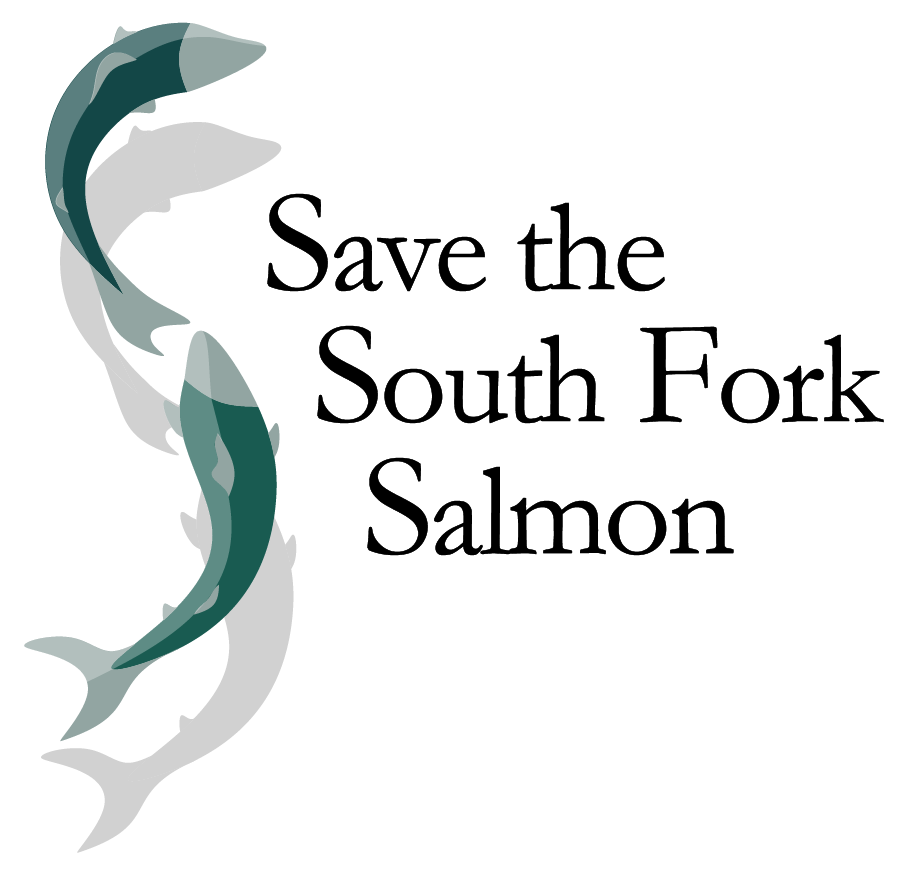Save the South Fork Salmon, Inc.
Mission, Purpose, and Vision
Revised April 2020
Mission
Save the South Fork Salmon strives to protect and preserve the ecological, cultural, and economic resources of the South Fork of the Salmon River watershed and the well-being of the people that depend on them for generations to come
.
Purpose
Save the South Fork Salmon aims to promote ecologically informed stewardship of the river and its tributaries, honoring the cultural, spiritual and economic value of the broader South Fork of the Salmon watershed for both present and future generations. As local people we know the importance of vigilance in the protection of high elevation headwaters for water quality, unique habitat, and all the downriver economies that are dependent on the health of the river.
The proposed Stibnite Gold Project is the most immediate threat to the South Fork of the Salmon River watershed. It is erroneous to assume that a “cornucopia” of purported economic and environmental benefits derived from a large scale gold mining operation would outweigh the costs that three open pit mines will have in terms of impacts to water quality, air quality, climate, soil, ecosystems and sensitive species; all important components of an environment that supports long term human health and well-being.
For every boom there is a bust. With a boom comes a strain on the local economy, available workforce and housing , roads and other infrastructure, and dangers of toxic contamination of our waterways. With a bust comes the legacy of transferring to taxpayers the costs of infrastructure expansion to accommodate the boom, and the inevitable financial burden and stigma of perpetual pollution remediation.
Save the South Fork Salmon will work to inform the local municipal governments of the implications that their decisions and policies will have concerning the proposed Stibnite Gold Project.
Save the South Fork Salmon challenges the narrative of the “new green mine industry” that cynically promotes the idea that more mining is the only answer to restoration of sites already damaged from previous mining exploitation. In the case of the Stibnite mine, millions of dollars have already been spent trying to clean up the toxicity and destruction left by previous owners, but no one has ever done a cost analysis of what it would take to finish the job. Since the area’s damage has reached a measure of stability presently, if there was the political will, there are many ways that incremental work could be done to carefully and gradually bring the area back to complete health without endangering the whole ecosystem with expanded cyanide leach pit mining.
Vision
We envision a management plan for the river corridor that emerges from the urgency of the following realities of the 21st century:
Climate Change
Extinction of Species and Loss of Biodiversity
The significant value of clean water and the importance of high elevation watersheds as they relate to climate change and preservation of biodiversity.
We envision a time when the public understands that more mining is not the only answer to the restoration of previously mined areas but will only engender more risk to already damaged land, water, ecosystems and economies.
We envision a future where the need for a healthy South Fork of the Salmon watershed compels local governments to enact protections for their citizens, and their land and water.
We will work for a future where Native Americans’ reserved treaty rights are enforced by all land management practices and decisions.
We support legislation, such as the Hard Rock Mining Reform Act of 2019, that brings mining laws in the United States in line with the realities of the 21st century.
We envision a future where vital ecosystems and headwaters would be exempt from mining activities either by law or by purchase of the private land in question through land trusts or other appropriate actions.

